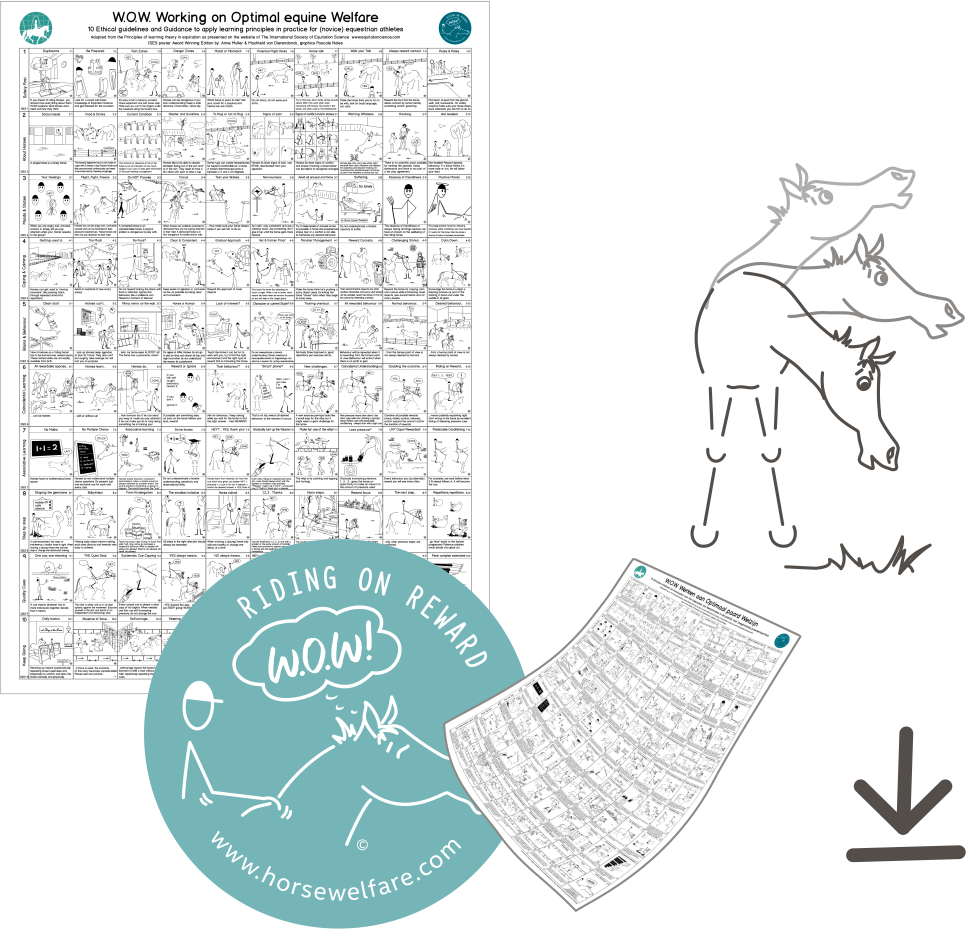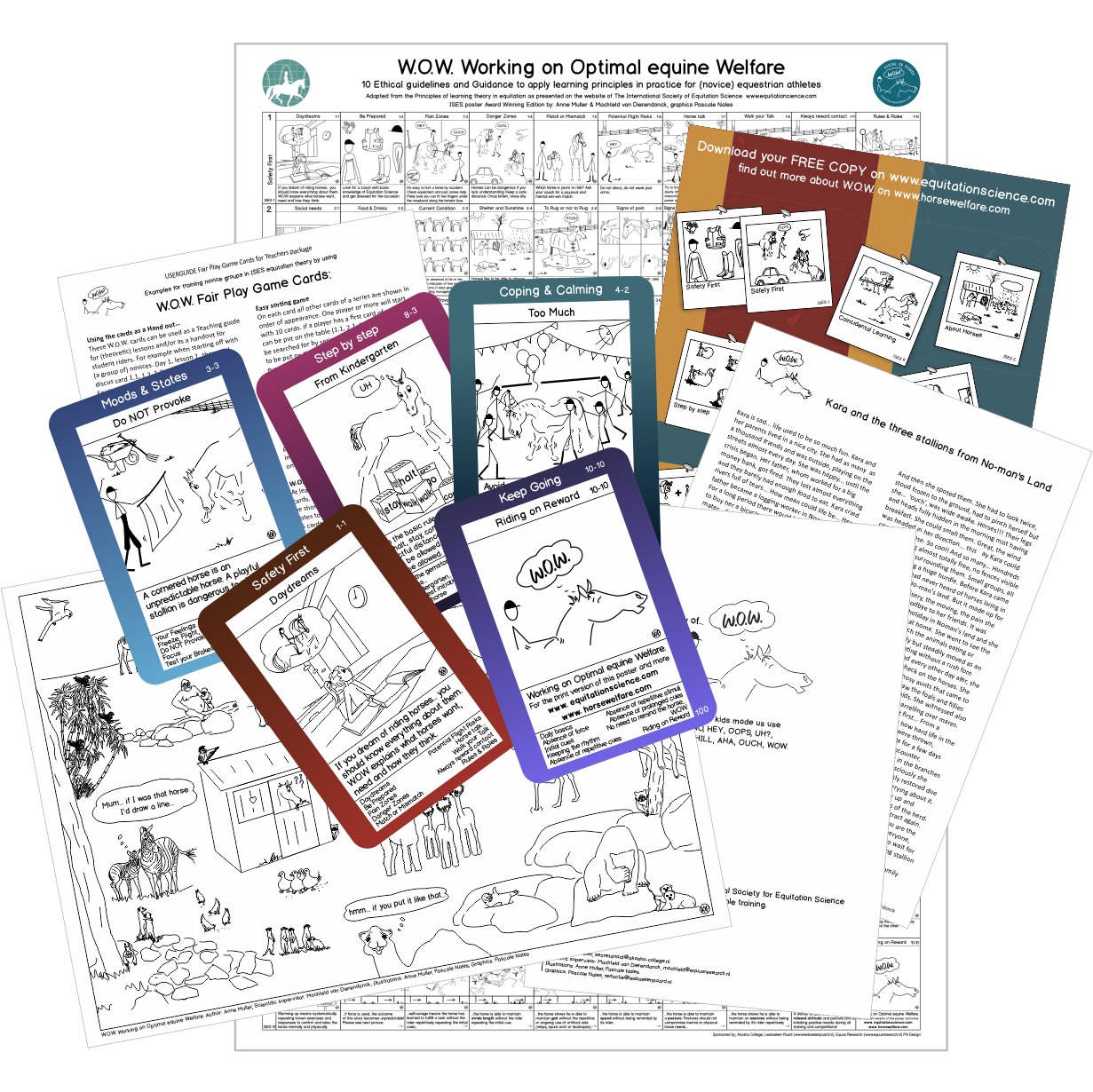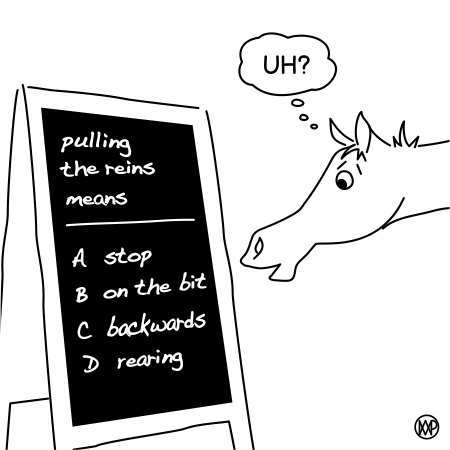Working on Optimal equine Welfare

The ISES-WOW Poster provides riders with pragmatic tips and tools explaining the ISES academic approach without difficult words, with a dash of humor and a hundred appealing cartoons.
WOW is meant for ALL who love horses or are interested in horse welfare. The academic approach of sustainable training: applied equitation science in a charming and understandable way.


Riding horses should not be taken lightly. It is unnatural for the horse, but it is also unnatural for you as a human. So, if you want to do good for your horse and good for yourself, then this requires knowledge about the horse, horses mirror your own behaviour and you have to adopt clear guidelines for the way you train your horse. Unfortunately, riding is not pure science: there is not one method that fits every horse-rider combination. However, there are certain directions and guidelines which can help you to train more sustainable. The 10 ISES guidelines indeed seem to point in that direction. WOW found a way to translate these guidelines in a playful, effective way and made it tangible to implement them in practice. In our eyes this is absolutely a way forward and we do stimulate you to explore them. It will help you to embrace new insights”
Piko Fiegen, Dierenbescherming

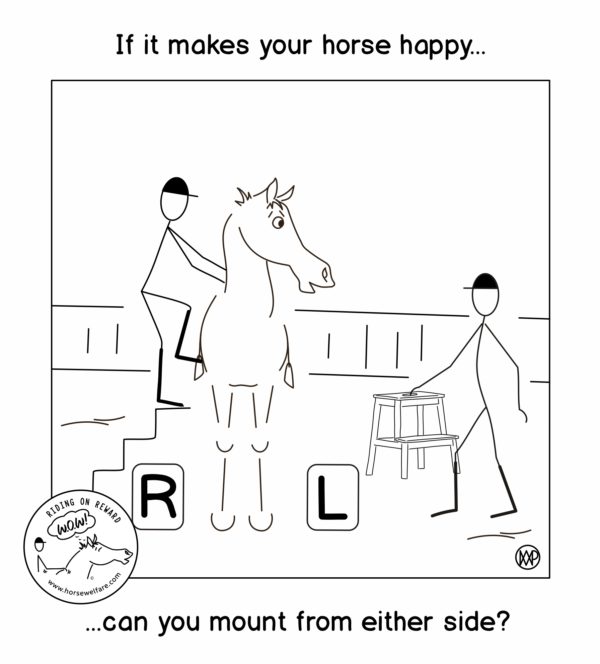
Aim of the ISES-WOW project
One of the future aims of the ISES-WOW project is to initiate some robust studies in order to assess the WOW approach scientifically. We would like to do additional scientific studies to assess the impact of different essential elements of the WOW project. Scientific studies are essential in the ISES Mission equitationscience.com/about/mission-and-aims.

The WOW poster is downloadable for all, for free!
Both the development of our poster and tools and our preparations for future scientific studies already have costed a lot of time and funding. To reach all our goals we do charge a very small fee for the additional packages we developed.
All donations to support more WOW projects and researchers are very, very welcome!

WOW the Poster Working on Optimal equine Welfare
ISES* competition 2019 Award winning edition
please copy and share
With special thanks to Janne Winther Christensen, Uta König von Borstel
and Andrew McLean.
This poster is ment for ALL who love horses or are interested in horse welfare. It pragmaticly explains the academic approach of sustainable training: applied equitation science in a charming and understandable way.
Working on Optimal equine Welfare

This is what ISES says about the scientific approach to the art of sustainable Equitation: ‘Equitation Science promotes an objective, evidence-based understanding of the welfare of horses during training and competition by applying valid, quantitative scientific methods that can identify what training techniques are ineffective or may result in equine suffering. Equitation Science uses a multidisciplinary approach to explain horse training, for example from a learning theory perspective that removes anthropomorphism and emotiveness’. Learn more about ISES on www.equitationscience.com.
Note from the WOW team | These first principles are NOT a method but together they describe practical guidelines based on scientific knowledge which underpins all ethological needs and learning by all animals.
ISES 10 First Training Principles
Human and horse welfare depend upon training methods and management that demonstrate:
By acknowledging the horse’s size, power and flightiness | By learning to recognise flight/fight/freeze behaviours early. By minimising the risk of causing pain, distress or injury | By ensuring horses and humans are appropriately matched.
By meeting horse welfare needs such as foraging, freedom and equine company | By respecting the social nature of horses. By acknowledging that horses may perceive human movements as threatening | By avoiding dominance roles during interactions.
By acknowledging that horses think, see and hear differently from humans | By keeping the length of training sessions to a minimum. By not overestimating the horse’s mental abilities | By not underestimating the horse’s mental abilities.
By understanding that horses are sentient beings capable of suffering | By encouraging positive emotional states | By acknowledging that consistency makes horses optimistic for further training outcomes | By avoiding pain, discomfort and/or triggering fear.
By learning to apply correctly systematic desensitisation, over-shadowing, counter-conditioning and differential reinforcement.
By avoiding flooding (forcing the horse to endure aversive stimuli).
By understanding that horses will repeat of avoid behaviours according to their consequences
By removing pressures at the onset of a desired responses.
By minimising delays in reinforcement
By using combined reinforcement
By avoiding punishment.
By acknowledging that horses readily form associations between stimuli.
By always using a light signal before a pressure-release sequence.
By breaking down training into the smallest achievable steps and progressively reinforcing each step toward the desired behaviour.
By changing the context (trainer, place, signal), one aspect at a time
By planning the training to make it obvious and easy.
By ensuring the horse can discriminate one signal from another | By ensuring each signal only has one meaning By timing the signals with limb biomechanics | By avoiding the use of more than one signal at the same time.
By training the horse to maintain gait, tempo, stride length, direction, head, neck and body posture. By avoiding forcing a posture or maintaining it through relentless signalling (nagging).

Work in progress

The ISES-WOW concept is not finished with the presentation of the Poster and the packages yet.
Currently we are:
- Developing further educational materials, tools and guidelines at the moment especially for other more experienced equine performers.
- Developing and testing at Dutch competitions an assessment tool for a quick assessment of horses and riders warming up before a performance, which could be used by (ring) stewards.
- In collaboration with dr. Andrew McLean and our ISES chair dr. Janne Winther Christensen we are working on a pocket-size booklet in which we together give more indepth information about a sustainable and welfare friendly way to keep (food and shelter), raise, prepare and train equines. An additional tekst will be written to all of the 100 cards of the WOW poster. Also this pocket book will contain more tips & trics derived from practicing with the WOW concept and more.
- And off course we have not yet covered all elements of learning theory and so we like to design more pictures/concepts and think of more tips how to apply them in practice.
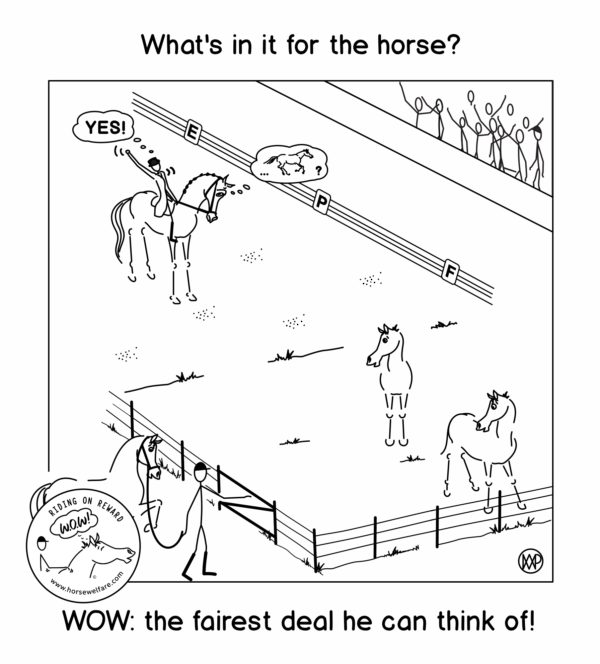
Equus Research Projecten
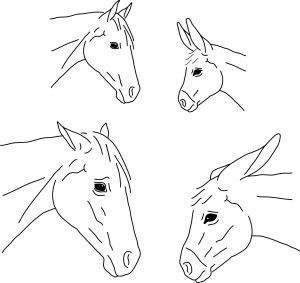
Is your horse or donkey in pain? Check it out for yourself!
Veterinarians and researchers from Utrecht University have done various studies on pain recognition in horses and donkeys for years. From the compound pain scales that resulted from this, it became clear that these can be very useful in making pain measurable. The scales work especially well for colic, facial and orthopaedic pain.
The measuring methods that followed from the studies are now very easy for everyone to use through EPWA. The app provides a reliable method to recognize pain and calculate a pain score for your horse or donkey. So you can decide whether it is neccesary to have the vet take a look at your animal.
Learn more
Wellbeing of Winners, performance protocol
Can you tell which horse is ‘the most happy’ in a field of competitors?
In collaboration with dressage riders, trainers, members of jury and a multidisciplinary group of scientists we are developing a ‘10 point’ Wellbeing Of Winners performance protocol. Happiness cannot be measured but relaxation, the absence of visual stress indicators and the use of repetitive cues can be measured…
to be continued...
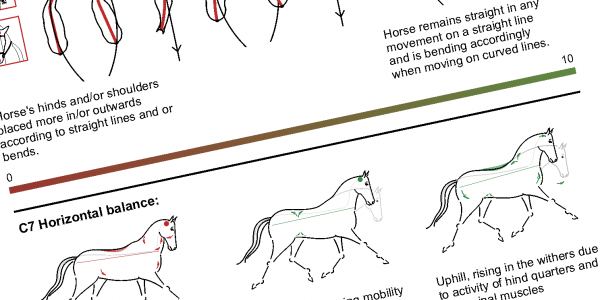
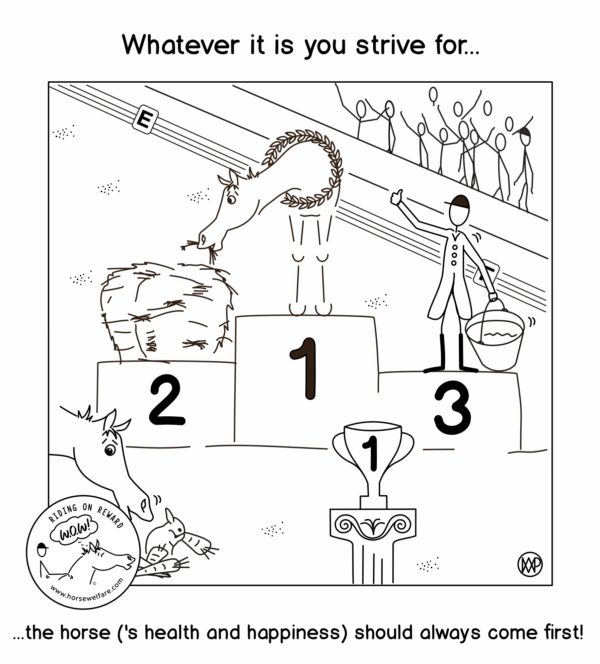
VCN Quick Scan Wellbeing
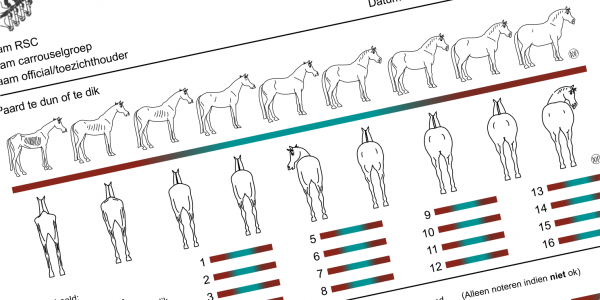
From parts of the poster and the performance protocols we have compiled a Quick Scan Wellbeing for officials and regulators (12 – 16 horses / ponies) on the forecourt for the VCN, United Carouselclubs Netherlands.

